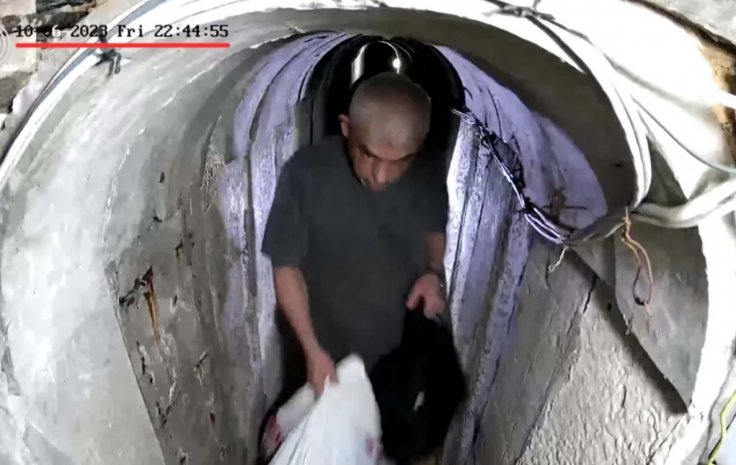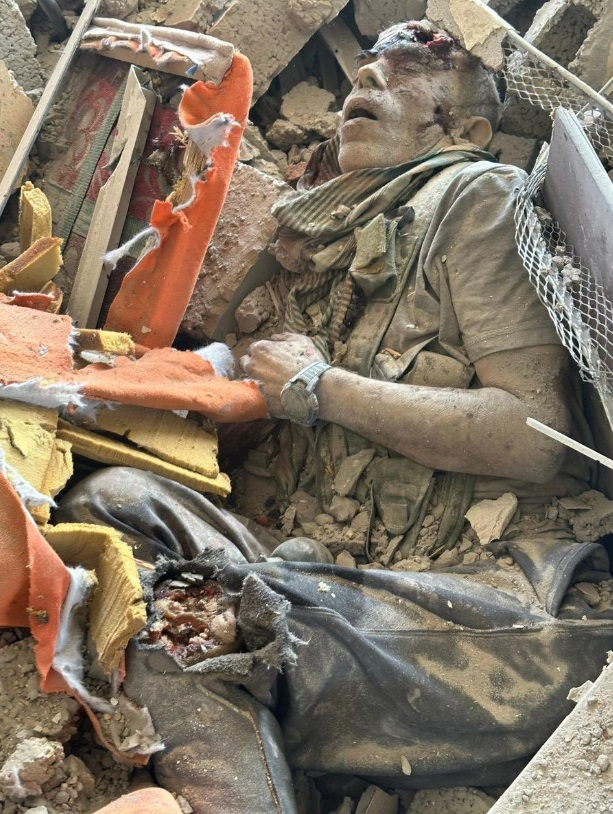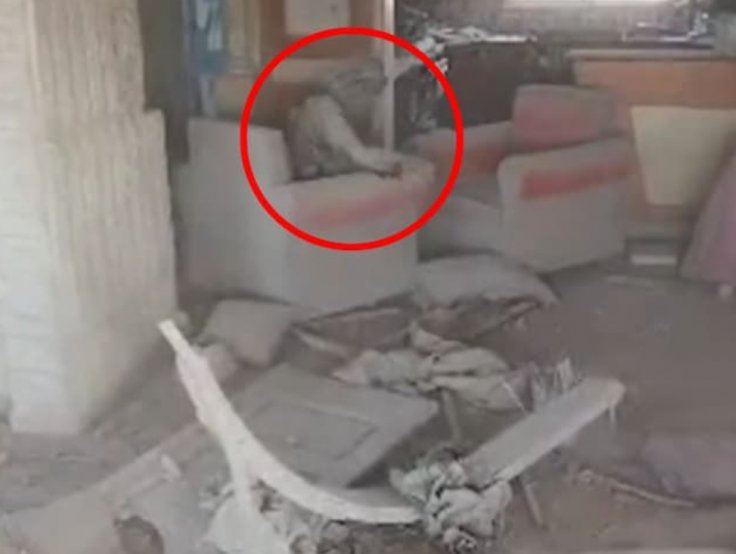Disturbing images show Hamas leader Yahya Sinwar hiding in relative comfort within his underground bunker while he ordered his group to carry out Israel's deadliest massacre.
Declassified photos and video released by the IDF on Saturday night reveal how Sinwar—who was killed earlier this week by a gunshot to the head after being forced out of his Gaza hideout—planned to remain in comfort while his militants executed the October 7, 2023 attack, the deadliest in the history of Israel. Sinwar is largely viewed as the mastermind behind the massacre, which saw 1,200 people killed and 250 taken hostages by Hamas and other terror organizations, according to Israeli reports.
Sinwar's Hideout

Over a year later, 101 hostages are still being held captive in Gaza. Two newly released images offer proof of the detailed planning that ensured Sinwar was well-provisioned in his underground bunker.
In another photo Sinwar's wife seen carrying a black handbag. Israeli soldiers uncovered his underground lair in the Tel al-Sultan area, revealing the measures taken to keep Sinwar comfortable while the deadly attack was carried out.

The images show Sinwar watching his group's activities on a wall-mounted television from a makeshift sofa with cushions and pillows. Fans attached to the walls helped regulate the hot, humid temperatures, while a clock, books, chairs, and other supplies scattered around the room supported his stay underground.
Another photo shows several more chairs, a Hamas flag, and even a makeshift clothesline.
The IDF also released a three-minute video showing Sinwar, accompanied by young children, casually carrying water bottles, plastic bags, furniture, and other supplies through a tunnel leading to his hideout.
Eerily, the activity took place in the middle of the night, just hours before Hamas launched Israel's deadliest massacre. Sinwar is seen repeatedly walking back and forth through the same tunnel, starting at 10:44 p.m. on October 6—only eight hours before terrified citizens began reporting the mass terror attack.
Carrying Cash in Handbag
The first to emerge from the dark tunnel, lined with power cables along the ceiling, are two young children with backpacks. One is wearing a Barcelona FC jersey, the other a blue Ronaldo shirt with the number 7, carrying a pink bag.

Following them is Sinwar, holding plastic bags, and behind him is a woman in a hijab with a black handbag. Upon noticing the camera, she briefly pauses to smile before continuing.
Minutes later, Sinwar is seen again, this time carrying more bags. By 11:41 p.m., he is shown repeatedly hauling water bottles and large bags on his back, a process that continues for the next few hours.
Throughout the footage, Sinwar remains disturbingly calm, walking at a relaxed pace. At 12:46 a.m., one of the young boys is still helping Sinwar, who by this time has started moving in small furniture items and cushions. Together, they carry a larger object covered in a grey-patterned cloth.

The clock by the end of the footage reads 1:32 a.m., just five hours before the first terrorists were spotted entering Israeli territory. These unsettling images and videos were released today, alongside confirmation from an autopsy that Sinwar was killed by a single gunshot to the head.
Sinwar, Israel's most wanted man, was killed on Wednesday after being tracked for over a year by intelligence services and the Israeli Defense Forces.
Known as the "Butcher of Khan Younis," the 61-year-old was killed following an hour-long firefight with trainee soldiers during a routine operation in the Rafah area of Gaza.

His death has sent shockwaves across the region, with Iran's Supreme Leader Ayatollah Ali Khamenei declaring, "Hamas is alive and will remain alive." During the fierce battle, two militants fled to one building while Sinwar, whose identity wasn't known by the Israelis at the time, escaped to another location.
In a grim display of the encounter's intensity, the Hamas leader was found with an electric cable tied in a makeshift tourniquet around his arm, which had been wounded by shrapnel from a missile or tank shell.
Israel made the mistake of publishing footage of Yahya Sinwar's last moments.
— Dan Cohen (@dancohen3000) October 17, 2024
Wearing a kufiyyeh and severely injured, he threw a stick at the drone filming him – a final act of defiance against the Zionist occupation.
In his death, he became a legend. pic.twitter.com/bHEpPSY9TD
However, Dr. Chen Kugel, who oversaw the autopsy, told The New York Times, "It wouldn't have worked in any case. It wasn't strong enough, and his forearm was smashed."
The terrorist chief was eventually shot in the head, as confirmed by the director of Israel's national forensic institute.
It remains unclear who fired the fatal shot or what type of weapon was used. Once the dust settled, Israeli soldiers noticed that the body found amid the rubble of the destroyed building bore a striking resemblance to Sinwar.









